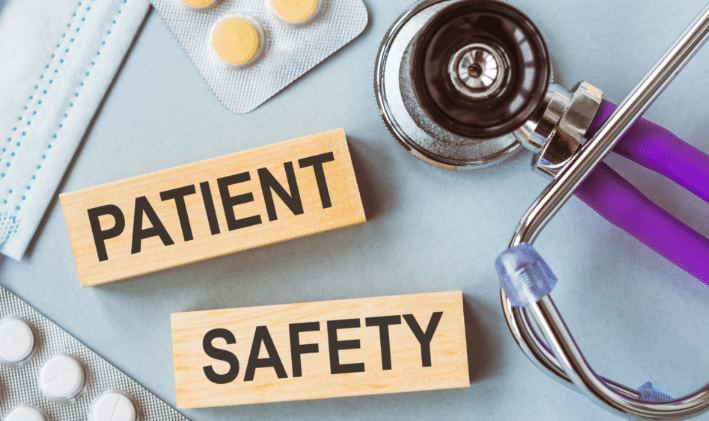
Patient safety is a critical concern in healthcare. Unfortunately, medical errors continue to occur, leading to harm, and in some cases, life-altering consequences for patients. Medical malpractice litigation plays a significant role in addressing these errors, not only by seeking compensation for victims but also by driving systemic improvements in healthcare standards. The relationship between malpractice litigation and patient safety is complex but essential, as both are intertwined in the quest to improve the quality of healthcare delivery.
Medical malpractice occurs when a healthcare provider deviates from the accepted standard of care, resulting in harm to a patient. This can include surgical errors, misdiagnoses, medication errors, and failures in communication or follow-up care. While the immediate goal of malpractice lawsuits is to seek justice and compensation for the injured parties, their broader impact can be felt in how healthcare systems approach patient safety.
Patient safety refers to the prevention of errors and adverse effects associated with healthcare. To ensure patient safety, healthcare organizations need to implement protocols, training, and systems that reduce the risk of harm. However, even with robust safety measures in place, mistakes can and do happen.
One of the critical ways that medical malpractice litigation influences patient safety is by identifying systemic failures. Malpractice claims often uncover patterns of negligence or repeated errors that may not have been addressed within the healthcare facility. These cases serve as a spotlight, exposing areas that require change to prevent future incidents.
For instance, a lawsuit involving repeated surgical errors may prompt a hospital to reassess its training programs or implement more stringent protocols. When healthcare organizations are held accountable through litigation, they are more likely to review their practices and address any deficiencies, ultimately improving patient safety for future patients.
Malpractice litigation encourages transparency and accountability in healthcare. In an ideal system, healthcare providers would be forthcoming about errors and take immediate action to correct them. However, fear of litigation or damage to reputation often leads to a lack of transparency. Medical malpractice lawsuits can push healthcare organizations to prioritize honesty and openness about mistakes.
When healthcare facilities are forced to confront their errors in a legal setting, they are more likely to adopt policies that encourage reporting and addressing mistakes before they result in harm. This shift toward a culture of accountability directly benefits patient safety, as it fosters an environment where errors are identified and corrected promptly.
Another significant outcome of malpractice litigation is the promotion of best practices and standards of care. When courts and juries determine that a healthcare provider was negligent, they often refer to the accepted standards of care within the profession. This can lead to a greater emphasis on following these standards across the healthcare industry.
For example, if a case reveals that a doctor failed to follow established protocols for diagnosing a condition, other healthcare providers may take note and ensure they adhere to those protocols in their own practice. In this way, malpractice litigation can serve as a deterrent, motivating healthcare professionals to maintain the highest standards of care, thereby improving patient safety.
Hospitals and healthcare facilities are often incentivized to enhance patient safety due to the financial risks associated with malpractice lawsuits. Medical malpractice claims can result in significant financial settlements, leading healthcare organizations to invest in safety measures to reduce the likelihood of errors and the potential for costly litigation.
These financial incentives encourage hospitals to adopt technologies, such as electronic health records (EHR) and decision-support systems, which can help prevent errors. By prioritizing patient safety, healthcare providers can reduce their exposure to lawsuits while also ensuring better outcomes for patients.
While medical malpractice litigation serves as a critical mechanism for holding healthcare providers accountable, it is essential to recognize the proactive steps that healthcare professionals can take to prevent errors and reduce the need for litigation.
Clear and effective communication between healthcare providers and patients is essential in reducing errors and improving patient outcomes. Many medical malpractice claims arise due to misunderstandings or miscommunication, whether about diagnoses, treatment plans, or post-operative care. Healthcare providers who prioritize communication are better equipped to prevent mistakes.
Healthcare providers must stay current with evolving medical knowledge and advancements in technology. Ongoing training and education are crucial in ensuring that doctors, nurses, and support staff can provide the highest standard of care. Medical malpractice litigation often reveals gaps in knowledge or training, emphasizing the need for continuous education to enhance patient safety.
Healthcare facilities that promote a culture of safety are less likely to face malpractice claims. This involves encouraging staff to report errors, providing support for those who make mistakes, and focusing on systemic improvements rather than assigning individual blame. A culture of safety reduces the risk of malpractice by fostering an environment where patient safety is the top priority.
The relationship between malpractice litigation and patient safety is symbiotic. While litigation may be seen as a reactive measure to address medical errors, its role in improving healthcare quality is undeniable. By identifying systemic failures, promoting transparency, enforcing best practices, and incentivizing safety measures, malpractice litigation plays a crucial role in advancing patient safety.
At Salenger, Sack, Kimmel & Bavaro, we are committed to holding healthcare providers accountable when they fail to meet the standard of care. Our work not only seeks justice for victims but also contributes to the broader goal of improving patient safety across the healthcare system.
ccaccese@sskblaw.com (212) 267-1950